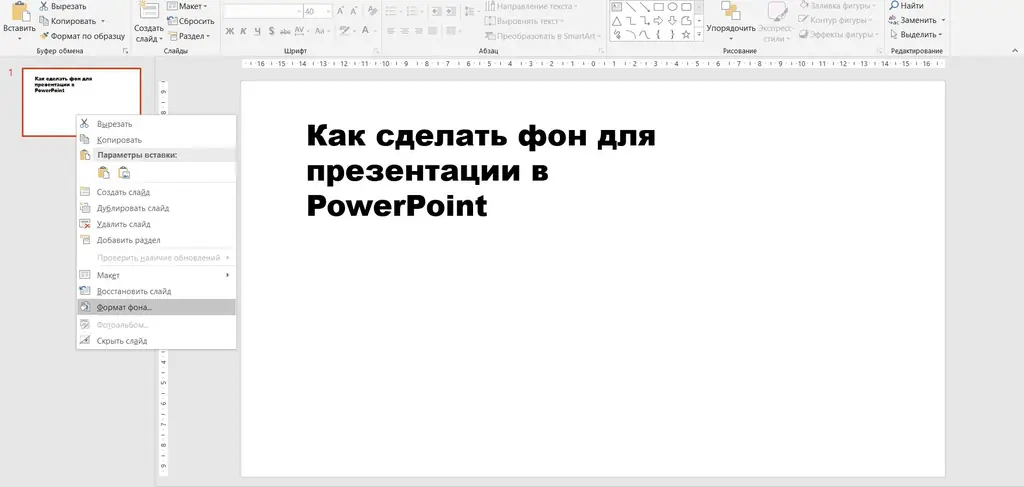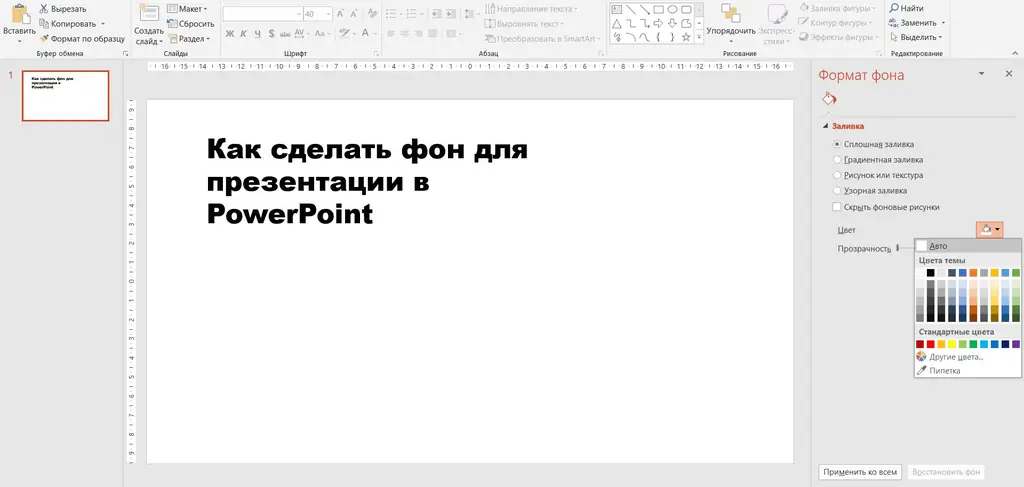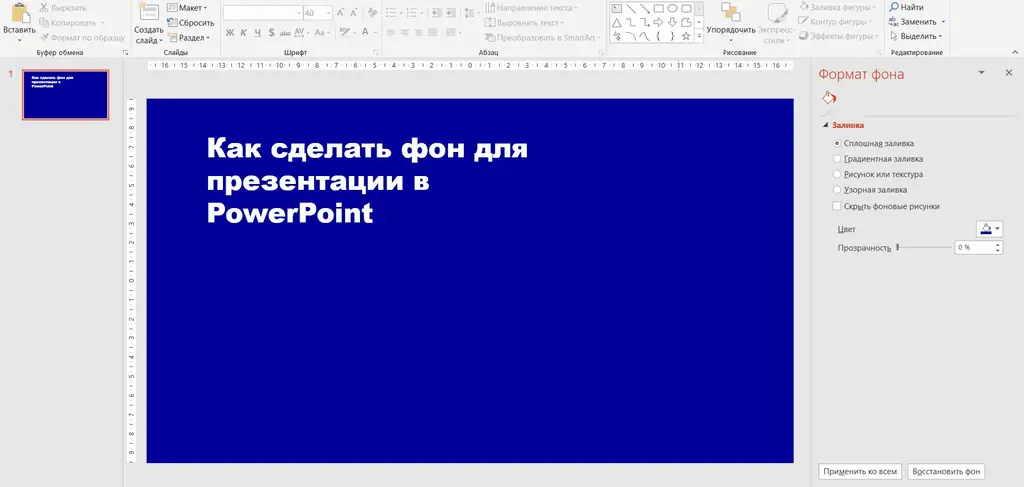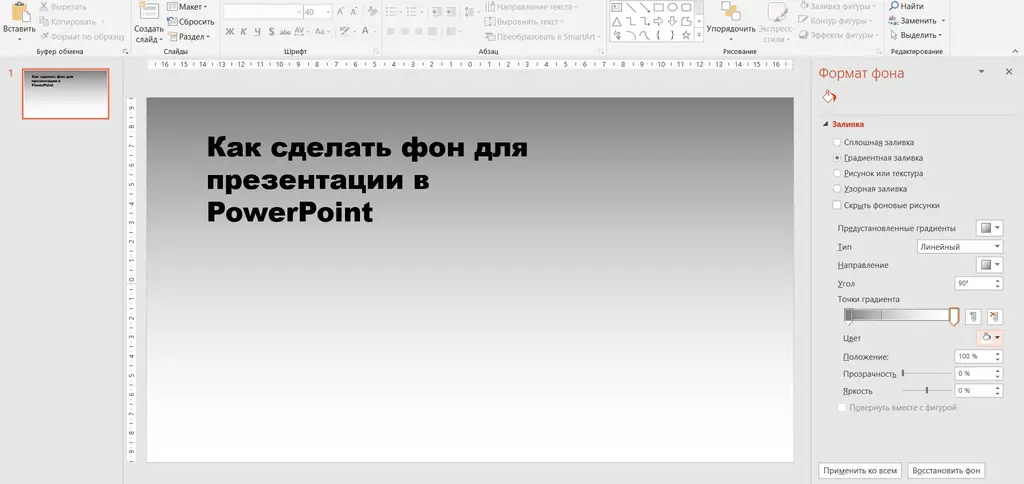The background of presentation slides in PowerPoint can magically transform ordinary text information into full-fledged presentation material. And while designers talk about the benefits of white background and space on slides, slides only benefit from careful work with the background.

Microsoft PowerPoint allows you to set the following types of backgrounds:
- solid and gradient fill;
- drawing;
- pattern or texture.
Setting all the indicated types of background is available in the "Format background …" window. To do this, right-click on the slide thumbnail in the left ribbon of the PowerPoint window and select "Format Background …" in the drop-down context menu.

In the panel that opens on the right side of the screen, select the desired fill method.
In the "Solid fill" column, a color selection palette and a transparency scale are available.

PowerPoint's color options aren't limited to the standard palette. When you click on "Other colors", an additional "Color" window opens, in which you can:
- choose a color from those listed in the "Common" tab;
- choose from the color scale in the "Spectrum" tab (here you can also use RGB, HSL color codes).


Another available option is a gradient fill slide background.

This function allows you to set the direction of the gradient in the Type and Direction boxes. Use the sliders on the gradient bar to set color points. Their number can be changed using the buttons to the right of the color scale. By default, the gradient bar contains four points, each of which can be set to a different color.
To set a picture as the background of a slide, you must select the "Picture or Texture" fill method. Next, click on the "File …" button and select the desired image in the window that opens. The drawing is automatically placed on the slide. If necessary, you can change its transparency using the appropriate scale.
In addition to the picture, you can set a texture for the background of the slide. PowerPoint contains a collection of textures, but you can use your own templates as well. To do this, in the same "File …" window, with the help of which the picture was selected, you need to find a texture template and insert it on the slide, and then in the "Background Format" window, check the box next to the "Convert picture to texture" column.






